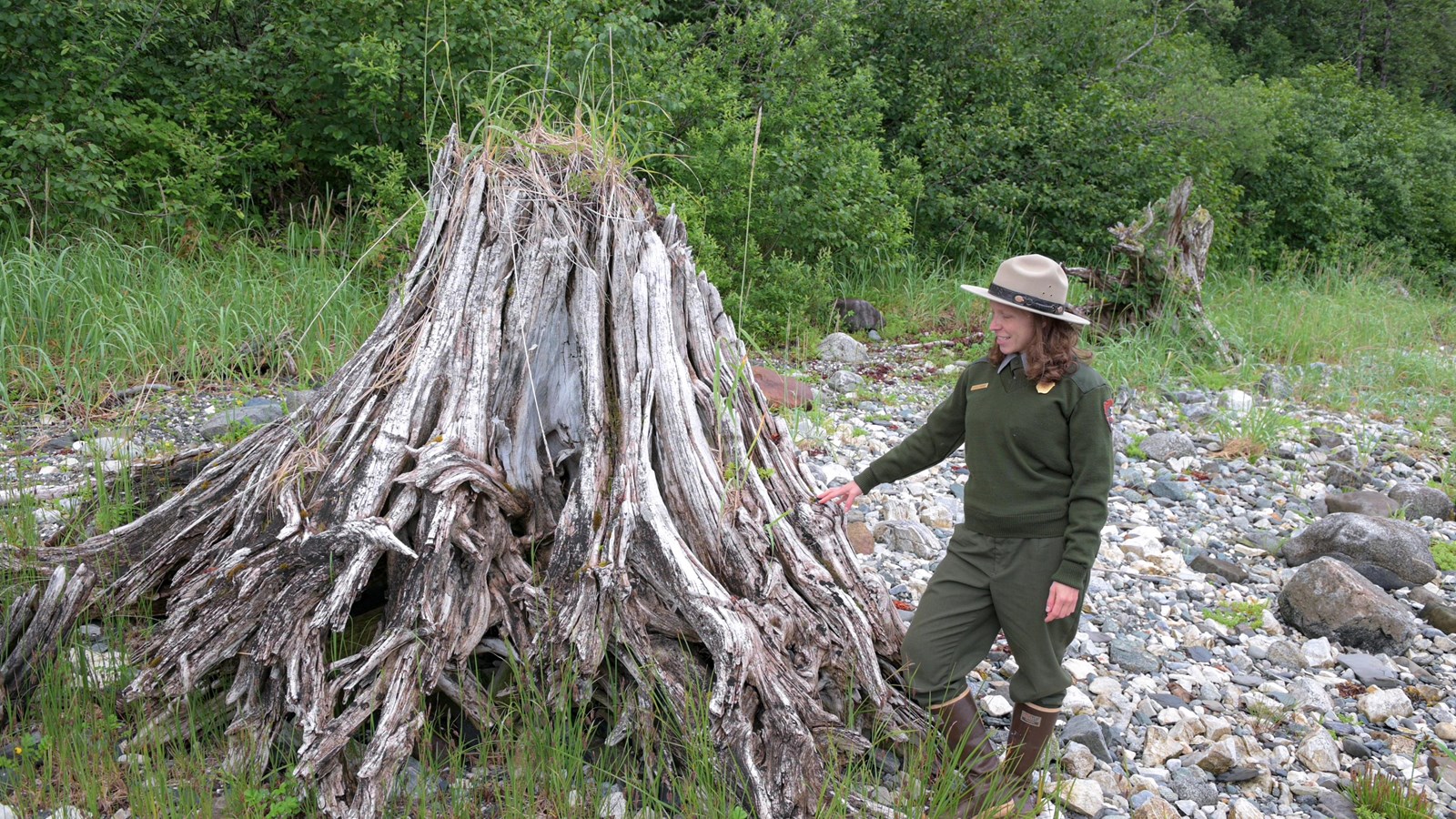Last updated: April 29, 2022
Place
Interstadial Stumps - Whidbey Passage

NPS Photo/S. Tevebaugh
Interstadial stumps can be found in various locations throughout the park. These stumps are left over from forests that thrived prior to the last ice age. As the glacier that carved Glacier Bay advanced, these trees were sheared to their stumps, covered by thick ice and sediment, and then exposed once more as the glacier retreated.
The oldest interstadial stump found in Glacier Bay is a 9,400-year-old specimen from upper Muir Inlet
Glacier Bay is the largest known repository in North America of interstadial wood from the Holocene period—the geological epoch that began at the end of the Pleistocene about 11,700 years ago and continues today. Delving into this storehouse of data, the researchers seek to reconstruct the paleoclimate and the highly complex sequence of glacial advance and retreat during the Holocene in the Glacier Bay region. A 1,500-year-long “master” chronology from Prince William Sound correlates well with chronologies from Glacier Bay. Tree-ring records from living trees have been correlated with meteorological records from Sitka dating back to the 1830s. Data suggests that at least six cycles of glacial advance and recession have occurred within the last 5,200 years in Glacier Bay. Probably none of these except the neoglacial (most recent) advanced all the way to the mouth of the bay. Advance and retreat in the west and east arms of the bay occurred asynchronously. Almost all the interstadial wood in Glacier Bay is Sitka spruce or western hemlock. The oldest in situ (rooted in place) interstadial stump found in Glacier Bay is a 9,400-year-old specimen from upper Muir Inlet. The Sitka spruce had been growing for 200 years when it was buried in sediment deposited by advancing ice. Twigs found in Reid Inlet were dated to 13,770 years ago.
Dan Lawson is a researcher studying past ice ages and interstadial wood. Read a summary of his work in Glacier Bay here.
- Duration:
- 7 minutes, 50 seconds
“On my way back to camp I discovered a group of monumental stumps in a washed-out valley of the moraine and went ashore to observe them.” ~ John Muir Unassuming at first glance, interstadial stumps help tell the glacial history of Glacier Bay. Witness to glacial advance and retreat over hundreds, and in some places thousands(!) of years; scientists like Dan Lawson have studied these trees to track when glaciers advanced and receded in Glacier Bay's history. Some stumps in the park date to over 9,000 years
